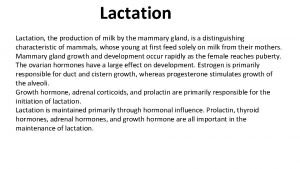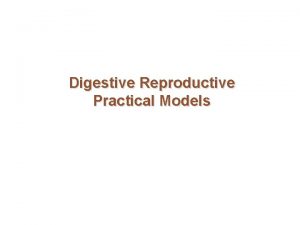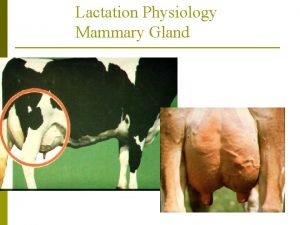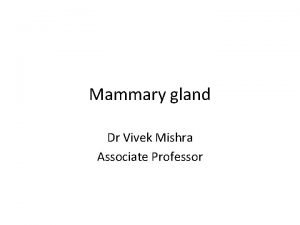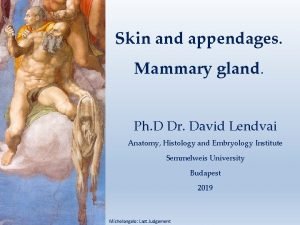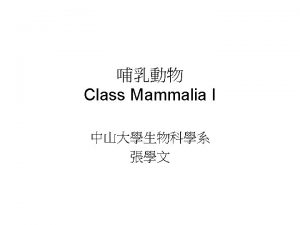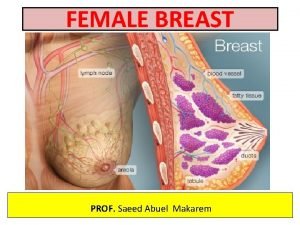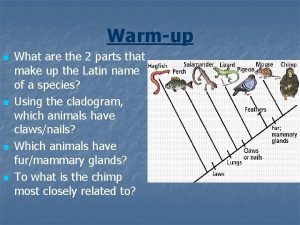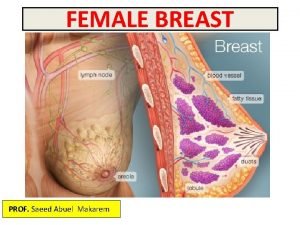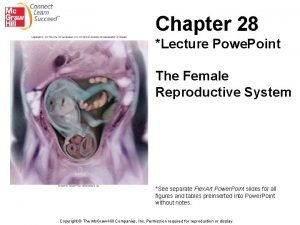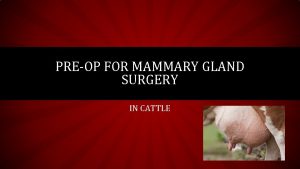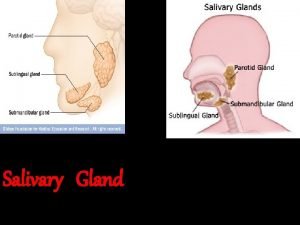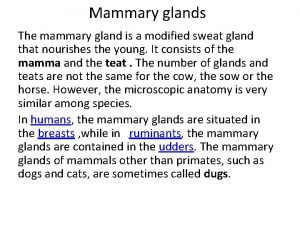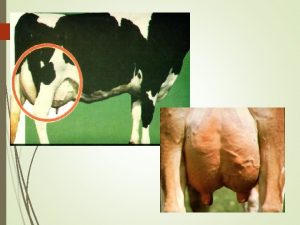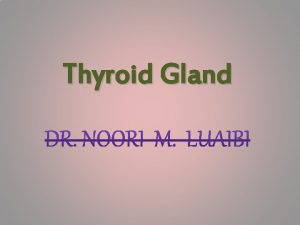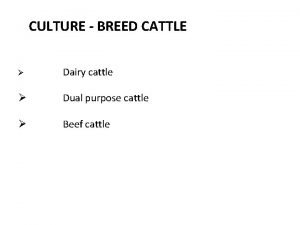PREOP FOR MAMMARY GLAND SURGERY IN CATTLE PATIENT















- Slides: 15

PRE-OP FOR MAMMARY GLAND SURGERY IN CATTLE

PATIENT EVALUATION • Distance examination • Physical examination with emphasis on station 5 • http: //184. 182. 233. 151/rid=1 NGDPPHYP-JGZZYDBKM 4/Udder%20 Examination%20. pdf? token. Id=1 RYBBGHH 1 -1 RXR 9 T 07 T 7 NYD&ext=true • History of patient


METHODS OF RESTRAINT q The methods of restraint and anesthesia are important in any teat surgery because the repair must be meticulous. http: //www. elearnvet. net/moodle/mod/resource/view. php? id=51884 q A tilt table, ideal for restraint, generally is not available to most practitioners who must deal with teat lacerations in the field.

• Xylazine hydrochloride (Rompun) is a useful means of restraining the cow in lateral recumbency for teat surgery. – Advantage for lateral recumbency is the reduction of bloat in animals which were not fasted. • Many surgeons prefer positioning the cow in dorsal recumbency for teat procedures. – Advantage for dorsal recumbency is decreases the risk of milk contamination and improving the view of the surgical field. q Ketamine may be mixed with Xylazine for an added effect.

PROPHYLACTIC TREATMENT

q. Local anesthetic injected around the base of the teat (circle or ring block) is the most common technique for anesthesia. q. Inverted V block at the base of the teat can also be used

q. Epinephrine should not be used with the local anesthetic. q Topical anesthetic can be infused directly into the teat canal to supplement ring block anesthesia. q. For topical anesthesia, 2% lidocaine (not procaine) should be used. q. Epidural anesthesia is an effective alternative for teat surgery

q. To control hemorrhage and milk flow, a rubber tourniquet may be applied to the base of the teat. q Doyen forceps clamped across the base of the teat can also be used successfully. q. When lacerations involve the base of the teat, suturing has to be performed without the benefit of a tourniquet.

PATIENT PREP q. The udder and surrounding teats should be washed thoroughly. q Harsh disinfectants should be avoided because they can cause further tissue necrosis if they contact the lacerated tissue.

WOUND DEBRIDEMENT q. The wound is carefully but aggressively debrided and lavaged with sterile saline. q. All the necrotic tissue is removed by scraping the tissue with a scalpel blade until viable tissue is exposed (pink and diffuse bleeding of the tissue). q. The margin of the skin may need to be trimmed using the scalpel blade or scissors.

q. The affected teat can be draped with a slit drape, so it protrudes from the opening in the drape. q. Once the borders of the laceration have been assessed carefully, a prognosis can usually be given.

THE FOLLOWING LACERATIONS HAVE A BETTER PROGNOSIS: • Fresh vs chronic • Vertical vs horizontal • Proximal vs distal • Sharp vs crushing

SURGEON AND SURGICAL AREA PREP • In many instances mammary gland surgical procedures may not be performed in an operating theatre but on the field. • It important that the procedure be conducted in a sanitized area and aseptic techniques utilized to reduce the risk of further infection.

 Mammary gland cow
Mammary gland cow Ejaculatory duct
Ejaculatory duct Mammary gland
Mammary gland Mammary gland
Mammary gland Mammary glands
Mammary glands Cattle egrets and livestock
Cattle egrets and livestock Pituitary gland and pineal gland spiritual
Pituitary gland and pineal gland spiritual Pineal gland pituitary gland
Pineal gland pituitary gland Mammary ridge
Mammary ridge How do you determine the gender of a fetal pig
How do you determine the gender of a fetal pig Cynocephalus variegatus
Cynocephalus variegatus Mammary ridge
Mammary ridge Uterus pig
Uterus pig Shark bullfrog kangaroo human cladogram
Shark bullfrog kangaroo human cladogram Blood supply of the breast
Blood supply of the breast Milk is continually secreted into the mammary acini
Milk is continually secreted into the mammary acini
